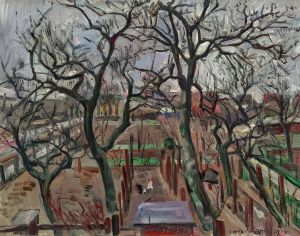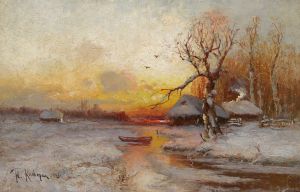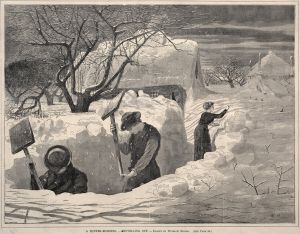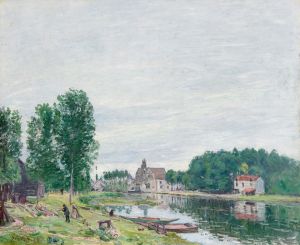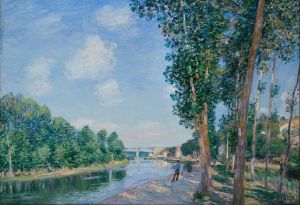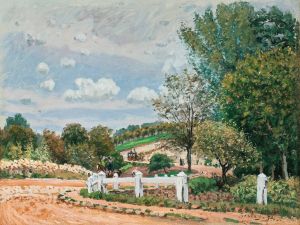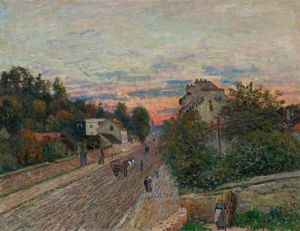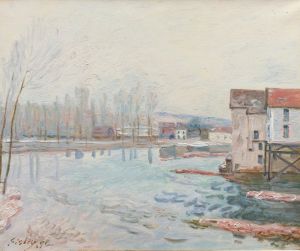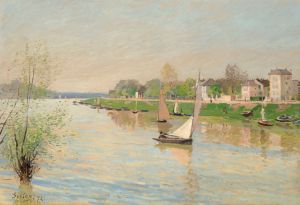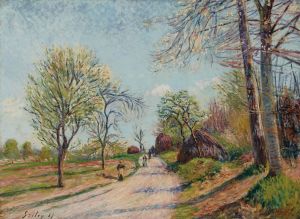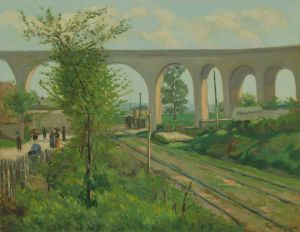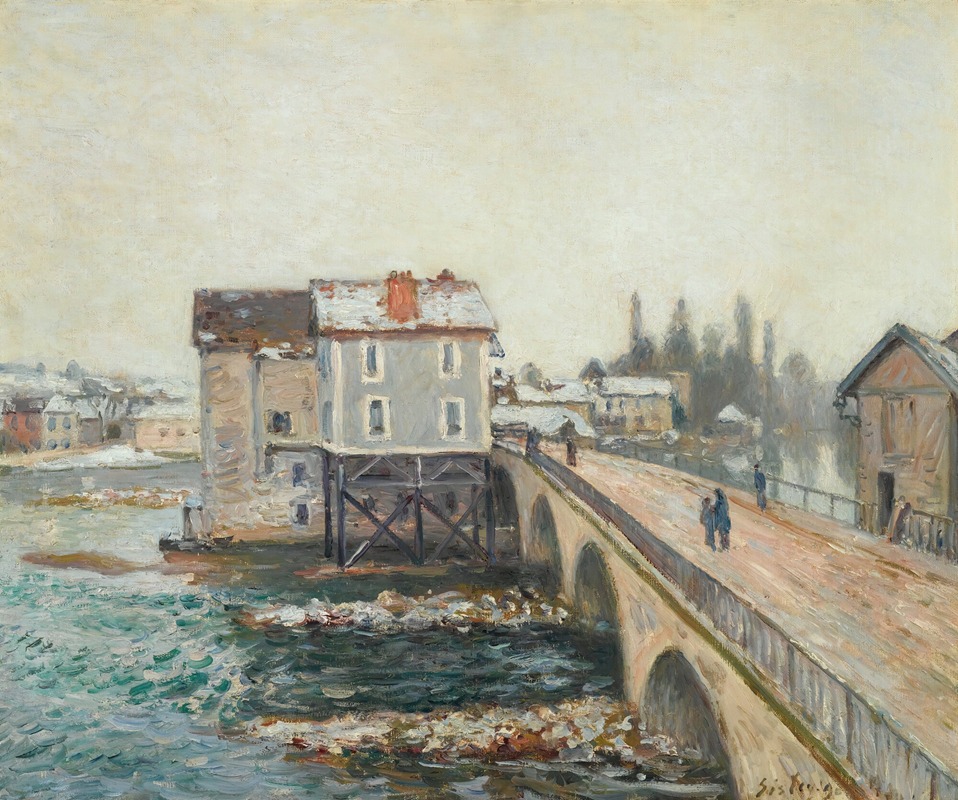
Le Pont De Moret Et Les Moulins – Effet D’hiver
A hand-painted replica of Alfred Sisley’s masterpiece Le Pont De Moret Et Les Moulins – Effet D’hiver, meticulously crafted by professional artists to capture the true essence of the original. Each piece is created with museum-quality canvas and rare mineral pigments, carefully painted by experienced artists with delicate brushstrokes and rich, layered colors to perfectly recreate the texture of the original artwork. Unlike machine-printed reproductions, this hand-painted version brings the painting to life, infused with the artist’s emotions and skill in every stroke. Whether for personal collection or home decoration, it instantly elevates the artistic atmosphere of any space.
"Le Pont de Moret et les Moulins – Effet d’hiver" is a painting by the renowned French Impressionist artist Alfred Sisley. Created in 1891, this artwork is one of the many pieces that Sisley painted of the town of Moret-sur-Loing, a picturesque village located near Fontainebleau, France. Sisley moved to Moret-sur-Loing in 1889 and found great inspiration in its charming scenery, which became a recurring subject in his later works.
Alfred Sisley (1839-1899) was a prominent figure in the Impressionist movement, known for his landscape paintings that captured the transient effects of light and atmosphere. Born in Paris to British parents, Sisley spent most of his life in France and was closely associated with other leading Impressionists such as Claude Monet, Pierre-Auguste Renoir, and Camille Pissarro.
"Le Pont de Moret et les Moulins – Effet d’hiver" depicts the bridge and mills of Moret-sur-Loing during the winter season. The painting showcases Sisley's skillful use of color and light to convey the cold, crisp atmosphere of a winter day. The bridge, an architectural focal point of the town, is rendered with delicate brushstrokes that highlight its structure and the surrounding snow-covered landscape. The mills, which were an integral part of the town's economy, are depicted in the background, adding depth and context to the scene.
Sisley's technique in this painting exemplifies the Impressionist style, characterized by loose brushwork, a focus on natural light, and an emphasis on capturing a moment in time. The winter effect, or "effet d’hiver," is achieved through the use of cool tones and subtle variations in color to depict the snow and ice. The reflections in the water and the soft, diffused light create a serene and tranquil atmosphere, inviting viewers to appreciate the quiet beauty of the winter landscape.
Throughout his career, Sisley remained dedicated to painting en plein air, or outdoors, which allowed him to observe and capture the changing effects of light and weather firsthand. This commitment to working directly from nature is evident in "Le Pont de Moret et les Moulins – Effet d’hiver," where the immediacy and freshness of the scene are palpable.
The painting is part of a series of works that Sisley created featuring the bridge at Moret-sur-Loing, each capturing different seasons and times of day. This series highlights Sisley's fascination with the interplay of light and color and his ability to transform ordinary scenes into extraordinary works of art.
"Le Pont de Moret et les Moulins – Effet d’hiver" is housed in the Musée d'Orsay in Paris, which holds an extensive collection of Impressionist and Post-Impressionist masterpieces. The museum's collection provides a comprehensive overview of the development of modern art in the late 19th and early 20th centuries, with Sisley's works being an integral part of this narrative.
In summary, "Le Pont de Moret et les Moulins – Effet d’hiver" is a testament to Alfred Sisley's mastery of the Impressionist style and his deep connection to the landscape of Moret-sur-Loing. Through his delicate brushwork and keen observation of nature, Sisley captures the serene beauty of a winter day, inviting viewers to experience the quiet charm of this historic French village.






